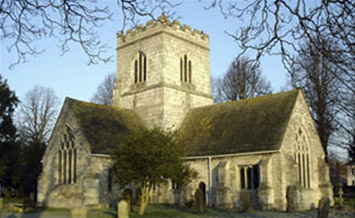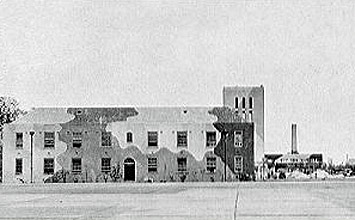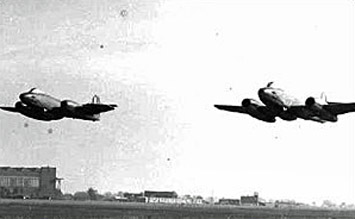A Brief History of Church Fenton
The following is a brief history of Church fenton, thanks to the late Frank Dean for providing much of this information and to Andy Barker for putting it together.
The Origins of the Village
The first documentary evidence of Fenton is in 963AD when King Edgar made a grant of twenty Hides to Aeslac of Sherburn-in-Elmet. Little evidence remains of the earlier origins of the village, although in 800AD an archive source records:
"East of the high ground at Sherburn the land was wooded with huge oaks and tiny British settlements. Houses were made of poles covered by skins or leaves. The land was low lying, often below sea level. Tracks that existed were limited to ridges of high ground."
We can perhaps assume that the village main street probably reflects one such ancient path.
The name Church Fenton has evolved over the years, starting as Fentune in 963 to Fentun in the Doomsday book of 1086. Kirk Fenton is first mentioned 1338 signifying the establishment of a church in the village. 'Ton' or 'tun' suggests a community within an enclosure, reclaimed from the 'fen' which is an old English word for a marsh.
It is likely that the origins of the village were agricultural, although in 1400 records show that many villagers were employed at the Huddleston stone quarry at a time when the stone was being used to build York Cathedral. In 1458 the village had a population of 42 married couples, 26 single adults, 1 tradesman (blacksmith). There appears to be no mention of children. Major drainage works opened up the majority of the land for agriculture between 1600 and 1800 and the Moated House of the Lord of the Manor used to stand on the site of Manor Farm.
The Church
The church is reputed to be one of the smallest completely cruciform churches in the country carrying so large a tower. It is built using stone from the Huddleston quarry. The north and sections of the east transept date from 1230 and the first recorded vicar was a Thomas de Fenton in 1338. The tower was added in 1240 and the church has undergone two 'recent' major restorations in 1844 and 1966.

The original church clock was moved into the tower in 1780 but was replaced a year later by a new clock purchased from Goodall of Aberford. Parts of this clock remain in the current mechanism.
The original vicarage of the Church is the present 'Old Vicarage' opposite the Methodist chapel which dates from at least 1663. The 'new' vicarage was built in 1870 near the station on land purchased from the North Eastern railway.
The Methodist Chapel
The present Methodist chapel built in 1892 was preceded by an earlier chapel built in 1804 and probably attached at some point to Wesley House.
The Railway
Railways first appeared in the area with the Leeds and Selby line which opened in 1834. The York and North Midland was formed in York in 1835 and began planning a link to London. The first plan showed the railway passing through Kirkby Wharfe and North Milford. However, objections from the Grimston Estate led to a revised plan on the current route through Ulleskelf to Altofts near Normanton to connect with the Leeds to Derby railway.
Originally the railway crossed Common Road on a level crossing, with a station on the site now occupied by the present railway bridge.
In 1847 a new line was built to Harrogate for which a new station was built with workshops and an engine shed. In 1854 the York and North Midland was bought by the NER. The line from Leeds arrived in 1869 and in 1904 additional tracks were built to York which required the building of a new (third) station. The station employed a station master, porters, shunters, office staff, signal men, plate layers and a telegraph messenger. In 1990 the platform buildings and awnings were demolished.
The Airbase
RAF Church Fenton was opened on 1st April 1937, while it was still being constructed. It was built as a result of the RAF's massive pre-war expansion programme, in response to Hitler's move to increase the strength of the German armed forces. The base was designed as a fighter base from the outset, with the task of protecting the industrial regions of Leeds, Bradford, Sheffield and Humberside.

From the start of the Second World War, until August 1940, Church Fenton was a sector station in 13 Group, being home to both defensive and offensive squadrons. Because of Church Fenton's remoteness from southern England, it had a limited part to play in the Battle of Britain, being used as a base for battle-scarred fighter squadrons to rest and work back up to operational status.
Its main job was being part of the defensive network of fighter airfields that protected the industrial cities of northern England from attack by German bombers. Throughout the war the airfield was home to many squadrons and aircraft types, such as Spitfires, Hurricanes and Mosquitoes amongst many other. As with all of the RAF, inevitably a number of Church Fenton aircrew paid the ultimate price in the defence of Britain.

Following the end of the war, the station retained its role as a front-line fighter station in the defence of northern England. In April 1946, the station became one of the first in the country to operate jet aircraft, these were the Gloster Meteors of 263 Squadron, and later 257 Squadron.
In July 1959, the station ceased being a front line home defence station, and its role changed to that of pilot training, one which it carried out until 2013.
A comprehensive history of Church Fenton Airbase from 1937 to the present date can be found in Ian Herbert's excellent web site at www.rafchurchfenton.org.uk.